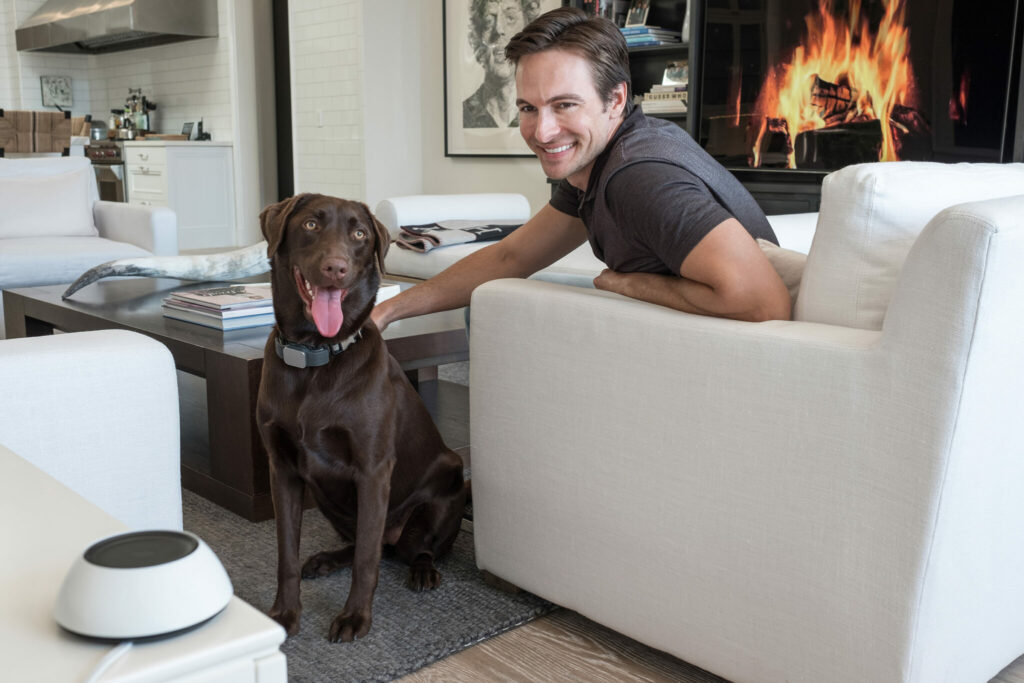Should My Smart Home Use a Control System or Multiple Apps?
“Can we use apps to control our system, or do we need an integrated control system?” This question is one we are often asked by our clients and building partners. There’s no right or wrong answer. It really depends upon the goals of the homeowners, as well as the size and complexity of your overall system. Basically, there are three system control architectures, each with its advantages.
Single Integrated Control System
With a single integrated control system such as Control4 and Crestron Home, most, if not all technology systems are controlled by a single user interface. This single interface provides a simple “one-stop shop.” So, instead of jumping between multiple apps, all of your systems’ controls are in the same place. A control system also allows for greater scale, making this option a good choice for larger homes (single apps typically have a limit on the number of rooms you can control).
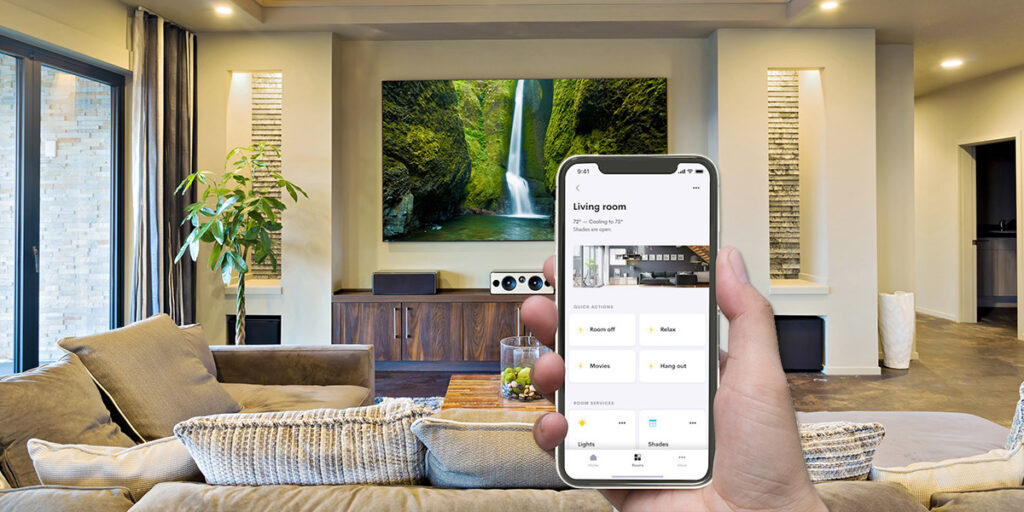
Another advantage is automation – multiple systems can communicate with one another to make life more convenient. For example, a “Leave home” button can lower the shades and turn off the lights and music.
And, a control system allows for use of video distribution in your home. With a video distribution system, the AV equipment is kept in a centralized rack instead of local to each TV location. This eliminates clutter in your living spaces. And, also the cost of buying or renting multiple sets of equipment (cable boxes, AppleTVs, Blu-ray players, etc). It also makes managing the system more efficient.
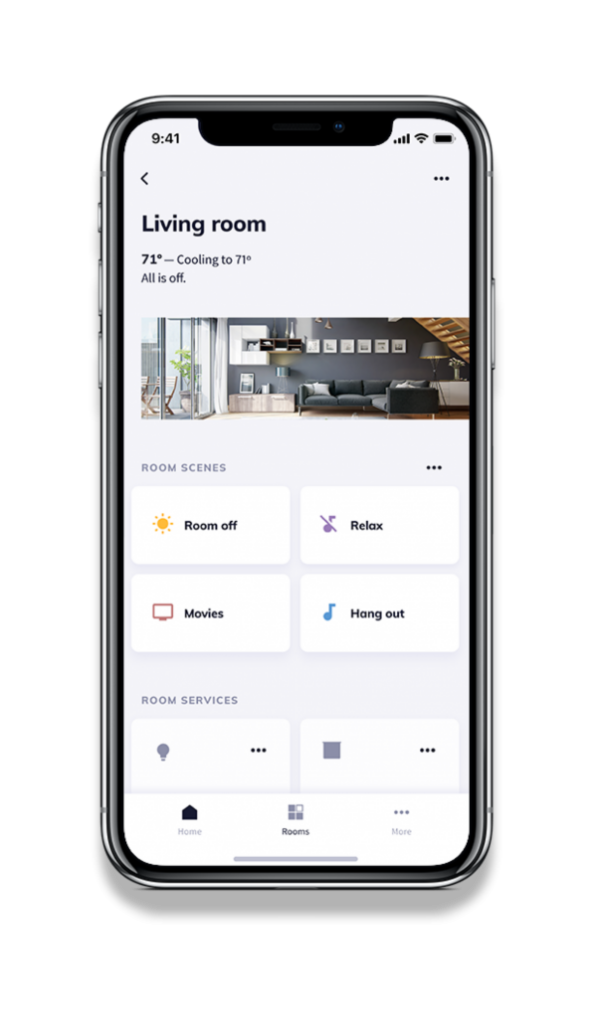
Control with Multiple Apps
Controlling systems with multiple apps is increasing in popularity, especially for smaller systems. Each system has its app or interface and has limited to no communication with other systems. However, the user interfaces are often best in class – the lighting app is designed just for lighting, the music app just for music control, etc.
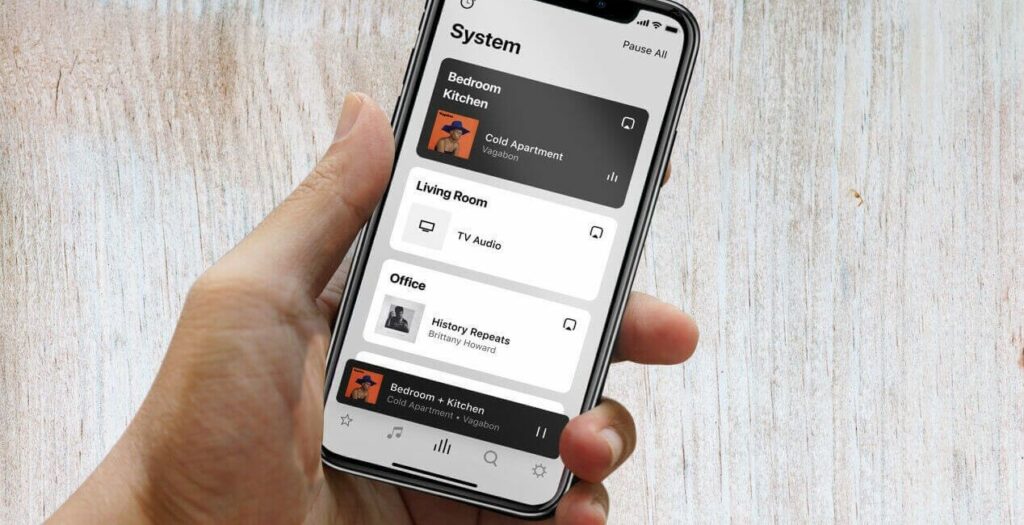
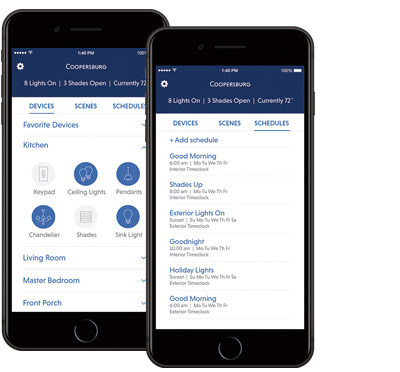
Control using multiple apps is typically lower in cost than a fully integrated system. And because there’s very little communication between systems, there are fewer failure points, making issues easier to troubleshoot. However, because the systems don’t communicate with one another, you lose the ability to automate systems.
Hybrid – Control System + Apps
There are also instances where a combination of system control using a control system and apps is the best solution. Lighting control and music throughout the home may be controlled with apps, but you’ve got a home theater and entertainment area in the basement. Think about the number of components in these spaces – projector, TV(s), media-streaming devices, cable boxes, video game systems, AV receiver, speakers, etc. Now think about controlling these devices separately. An integrated control system will make use of that space easier. Not to mention eliminating the clutter of multiple handheld remotes.
Another variation of this is the use of a voice control platform. You may use a Roku remote for television, a Sonos app for music, and Lutron’s app and keypads for lighting and shade control. You can layer on top of this a voice control platform from Josh.ai. Josh natively integrates with Roku, Sonos, and Lutron, so you could say “Hey Josh, dim the lights in the Kitchen, turn off the TV, and start playing Marvin Gaye.” While there are some limits to voice control, it provides a very easy way to perform some very common commands. For everything else, you can continue to use the apps.
